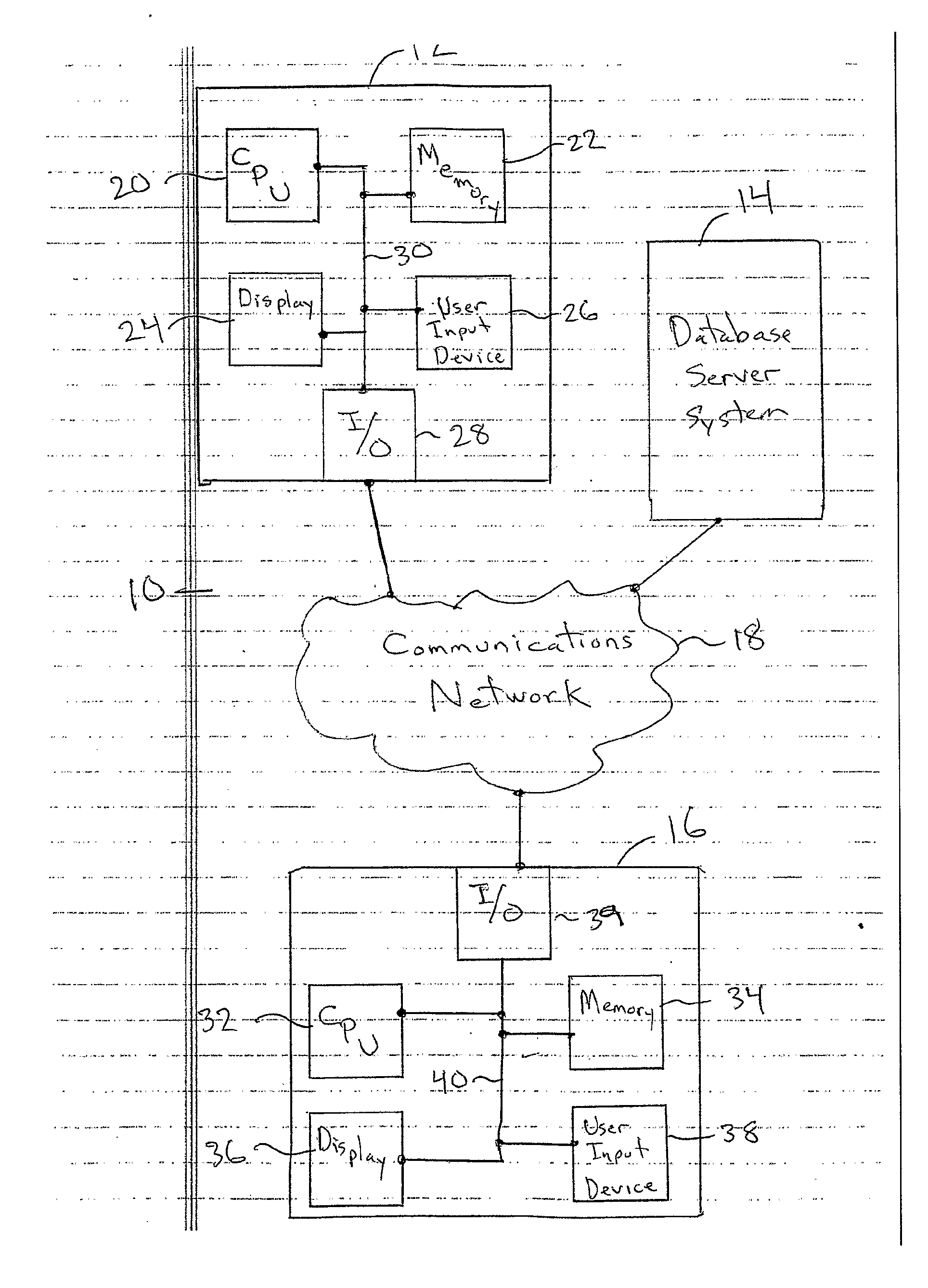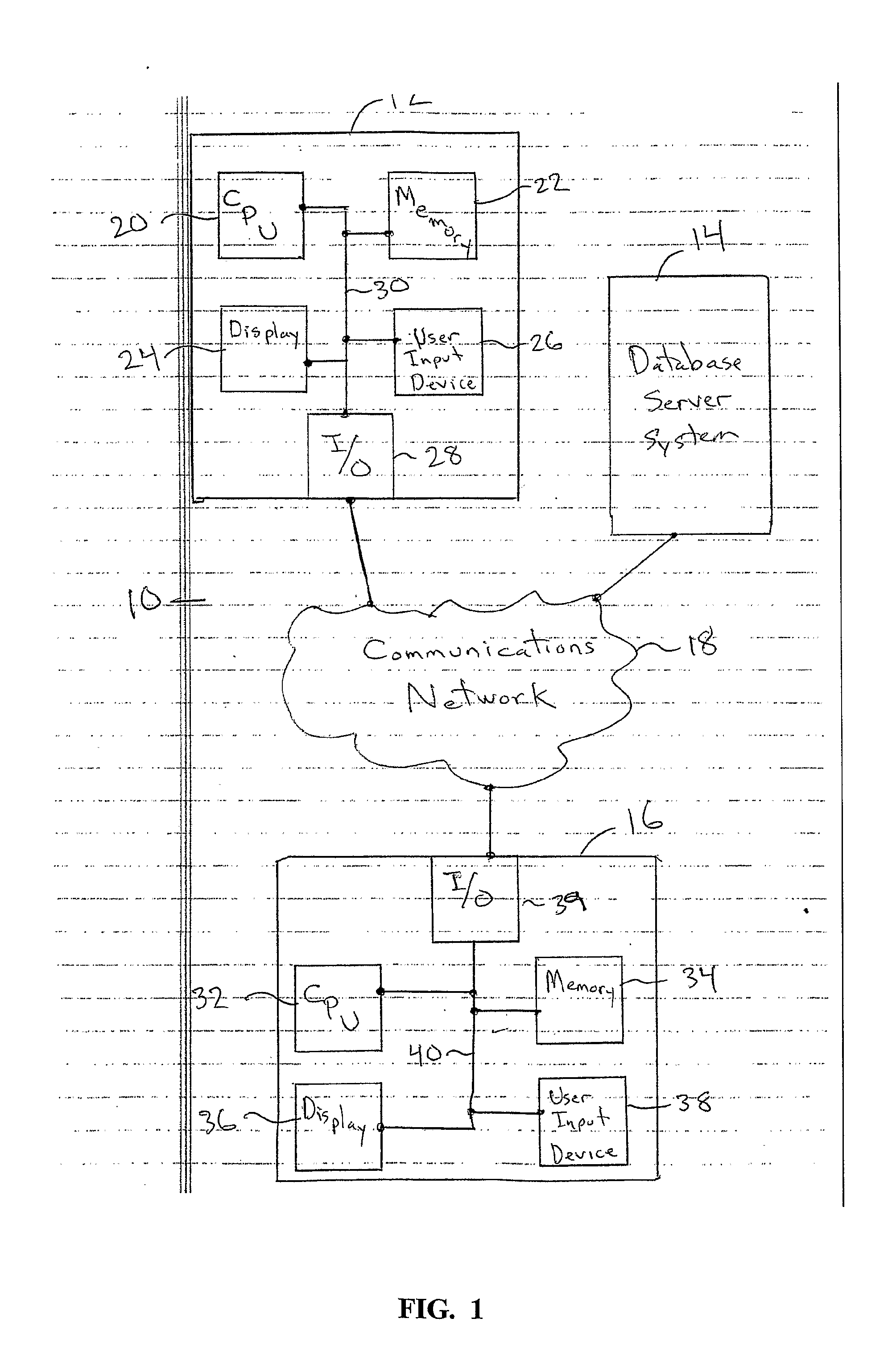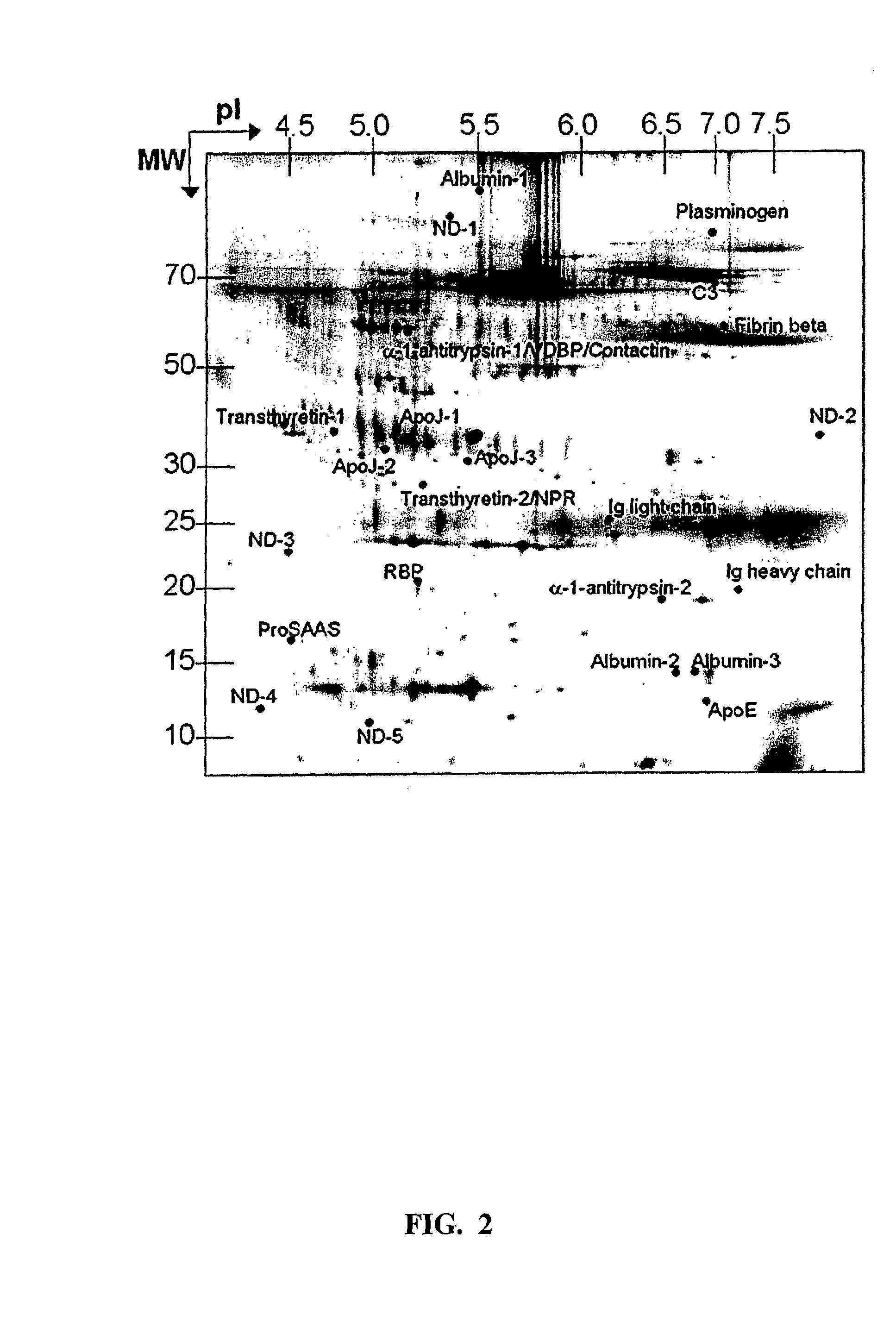Multiplexed biomarkers for monitoring the alzheimer's disease state of a subject
a multi-layered, alzheimer's disease technology, applied in the direction of biological material analysis, instruments, material analysis, etc., can solve the problems of affecting the reliability of the predicted sensitivity and specificity of the biomarker, affecting the discovery of new biomarkers, and changing protein expression
- Summary
- Abstract
- Description
- Claims
- Application Information
AI Technical Summary
Benefits of technology
Problems solved by technology
Method used
Image
Examples
example 1
CSF Samples
[0069]Antemortem lumbar CSF samples from several CSF banks and other sites in the United States were shipped on dry ice and stored at −70° C. until needed. A total of 68 CSF samples were used, 34 from AD patients and 34 from non-AD patients. The samples from AD patients included 31 retrospective samples (AD diagnosis confirmed at post-mortem examination performed by contributing institutions) and 3 prospective samples (2 diagnosed as probable AD and 1 diagnosed as possible AD based on the NINCDS-ADRDA criteria (McKhann et al., “Clinical Diagnosis of Alzheimers-Disease—Report of the NINCDS-ADRDA Work Group Under the Auspices of Department of Health and Human Services Task Force on Alzheimers Disease,”Neurology 34:939-944 (1984), which is hereby incorporated by reference in its entirety). The non-AD CSF included samples from control patients with no indication of dementia or neurodegenerative disease [normal (n=9), hydrocephalus (n=2), spinal schwannoma (n=1), head trauma (...
example 2
Two-Dimensional Gel Electrophoresis
[0070]The details of the protocols used for performing two-dimensional gel electrophoresis (2DE) have been previously published (Hatzimanikatis et al., “Proteomics: Theoretical and Experimental Considerations,”Biotechnol Prog 15:312-318 (1999), which is hereby incorporated by reference in its entirety). Briefly, 250 μL of CSF (containing approximately 100 μg of protein) were precipitated using ice-cold ethanol. The resulting protein pellet was dissolved in a solution of 9 M urea (Bio-Rad), 2% 2-mercaptoethanol (J. T. Baker), 2% IGEPAL (Sigma), and 0.25% carrier ampliolytes (Bio-Rad). The sample was then hydrated directly into 18 cm, 3-10 nonlinear immobilized pH gradient (IPG) isoelectric focusing gels (Amersham Biosciences). Isoelectric focusing was then performed at 20° C. using the Protean IEF unit (Bio-Rad Laboratories) for a total of 100 kVh to separate proteins in the first dimension by isoelectric point. The IPG gels were equilibrated in sol...
example 3
[0072]The % volume data were analyzed using the RF method described elsewhere (Hampel et al., “Discriminant Power of Combined Cerebrospinal Fluid Tau Protein and of the Soluble Interleukin-6 Receptor Complex in the Diagnosis of Alzheimer's Disease,”Brain Res 823:104-112 (1999); Choe et al., “Studies of Potential Cerebrospinal Fluid Molecular Markers for Alzheimer's Disease,”Electrophoresis 23:2247-2251 (2002); Lescuyer et al., “Identification of Post-Mortem Cerebrospinal Fluid Proteins as Potential Biomarkers of Ischemia and Neurodegeneration,”Proteomics 4:2234-2241 (2004), which are hereby incorporated by reference in their entirety). Briefly, N classification trees are built with each tree using an independent subset (approximately two-thirds) of the samples. To build a tree, the program chooses a random subset of m variables at each node and determines which variable in the subset can best separate the classes (e.g. AD gels and non-AD gels). After a tree is co...
PUM
| Property | Measurement | Unit |
|---|---|---|
| threshold percentage | aaaaa | aaaaa |
| threshold percentage | aaaaa | aaaaa |
| mass fingerprint | aaaaa | aaaaa |
Abstract
Description
Claims
Application Information
 Login to View More
Login to View More - R&D
- Intellectual Property
- Life Sciences
- Materials
- Tech Scout
- Unparalleled Data Quality
- Higher Quality Content
- 60% Fewer Hallucinations
Browse by: Latest US Patents, China's latest patents, Technical Efficacy Thesaurus, Application Domain, Technology Topic, Popular Technical Reports.
© 2025 PatSnap. All rights reserved.Legal|Privacy policy|Modern Slavery Act Transparency Statement|Sitemap|About US| Contact US: help@patsnap.com



